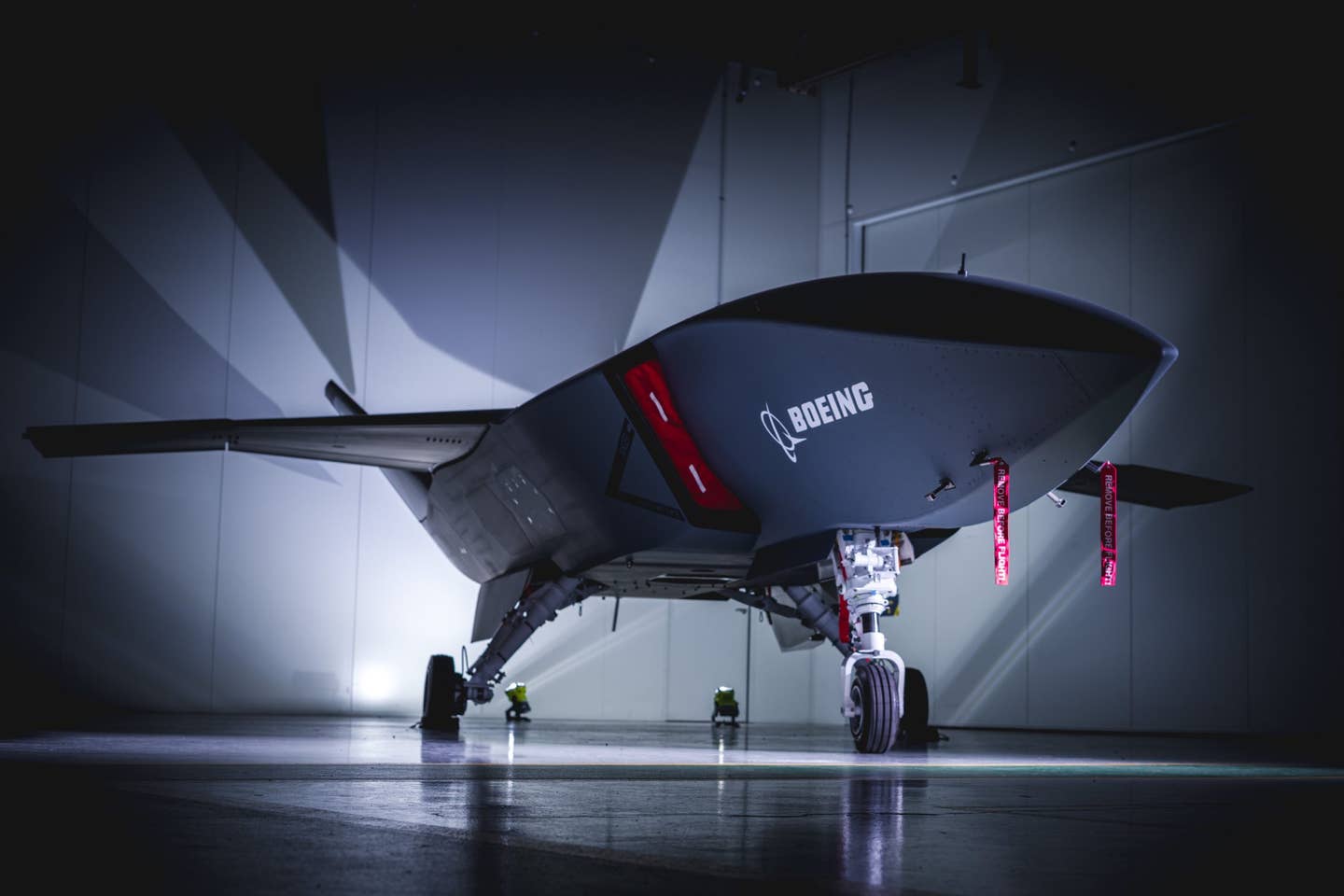Boeing Rolls Out Loyal Wingman Unmanned Aircraft
An Australia-based team led by Boeing presented its Loyal Wingman autonomous unmanned aircraft prototype to the Royal Australian Air Force on Tuesday. The aircraft, which is designed to “fly alongside…

Image: Boeing
An Australia-based team led by Boeing presented its Loyal Wingman autonomous unmanned aircraft prototype to the Royal Australian Air Force on Tuesday. The aircraft, which is designed to “fly alongside existing platforms and use artificial intelligence to conduct teaming missions,” is the first of three prototypes headed for Australia’s Loyal Wingman Advanced Development Program. Ground testing for the Loyal Wingman will begin shortly with its first flight expected later this year.
“We are proud to take this significant step forward with the Royal Australian Air Force and show the potential for smart unmanned teaming to serve as a force multiplier,” said Boeing Defense, Space & Security Vice President of Autonomous Systems Kristin Robertson. “We look forward to getting the aircraft into flight testing and proving out the unmanned teaming concept.”
Aimed at the global defense market, the Loyal Wingman is the foundation of Boeing’s Airpower Teaming System (ATS). It is approximately 38 feet long and has a range of more than 2,000 NM. The project is Boeing’s largest unmanned aircraft investment outside of the U.S.






